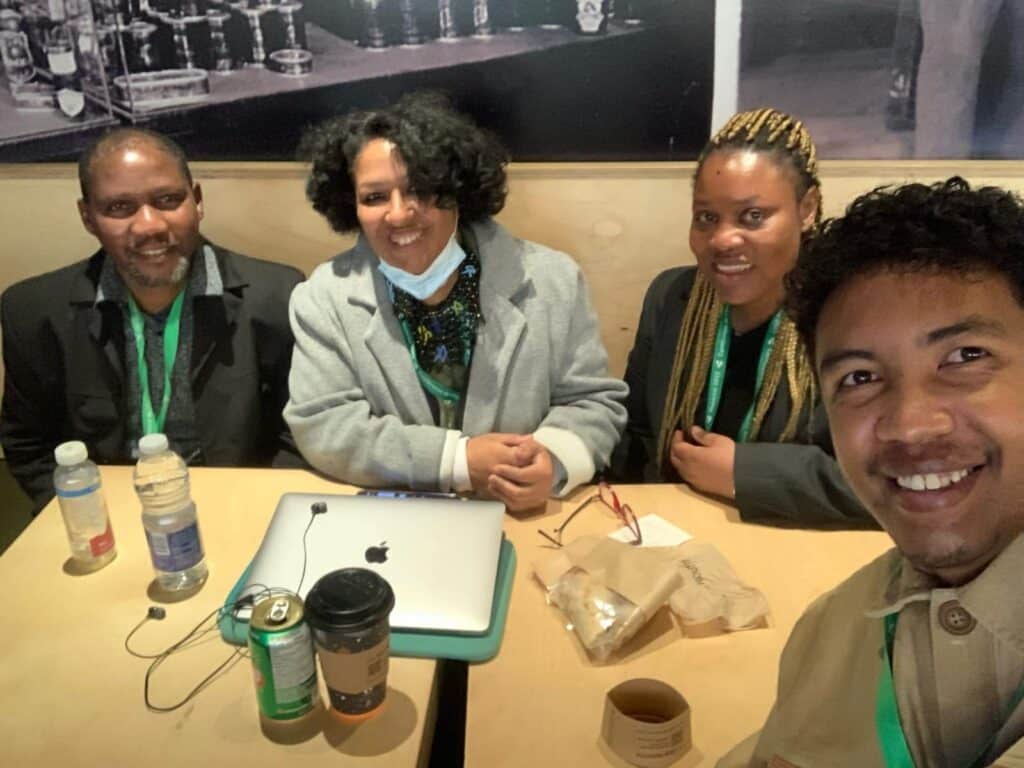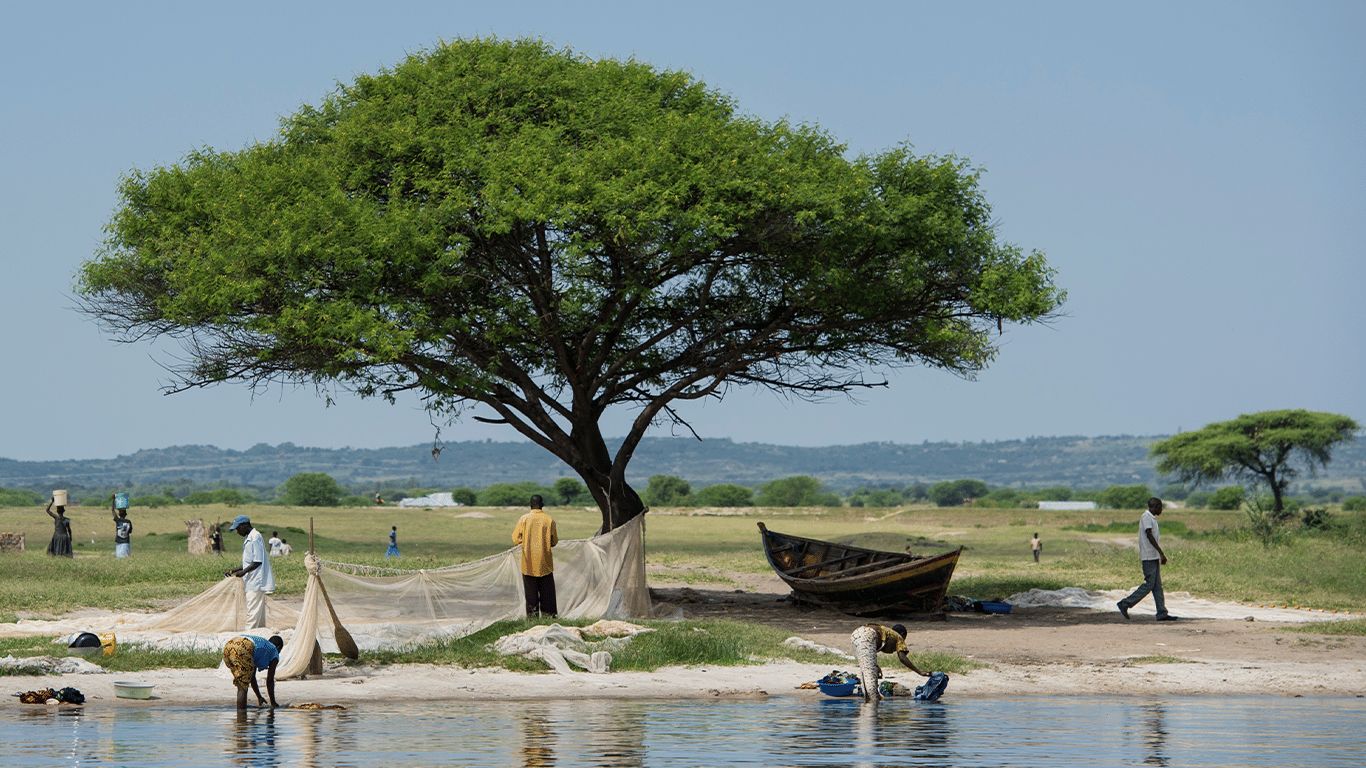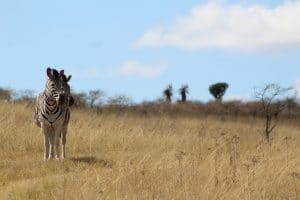Promoting Community Conservation at CoP15 in Montreal
By Resource Africa
Resource Africa actively participated in the UN Convention on Biological Diversity (CBD) 15th Conference of the Parties (CoP 15) in Montreal, Canada during 7–19 December 2022. During CoP15, governments from around the world came together to address the biodiversity crisis by developing and agreeing upon the Kumming-Montreal Global Biodiversity Framework, known as the post-2020 GBF.
Leslé Jansen represented Resource Africa at CoP15, working closely with other members of the African Civil Society Organisations’ Biodiversity Alliance (ACBA). Our participation focused on promoting community-based natural resource management (CBNRM) and the rights of indigenous people and local communities (IPLCs) to the sustainable use of biodiversity.
The next steps after Montreal are to continue improving CBNRM and defending it from threats that undermine sustainable use. Trophy hunting import bans proposed by the UK and several countries in the European Union work against the targets set out in the GBF. If we are to meet the GBF’s ambitious targets over the next 10 years, then sustainable use and community rights must be fully integrated into conservation efforts.
Leslé Jansen of Resource Africa (second from left) discussing the progress of CoP15 in Montreal with our partners.
What is the post-2020 Global Biodiversity Framework (GBF)?
The GBF is a 10-year plan that aims “to galvanise urgent and transformative action by Governments and all of society, including indigenous peoples and local communities, civil society, and businesses, to achieve the outcomes it sets out in its vision, mission, goals and targets”. In short, the GBF will guide the implementation of the CBD from now until 2030. The framework contains four overarching goals and 23 measurable targets.The previous CBD biodiversity strategy, running from 2010-2020, produced the 20 Aichi Biodiversity Targets. However, none of these targets have been fully achieved at the global level. The Global Assessment on Biodiversity and Ecosystem Services by the Intergovernmental Science-Policy Platform on Biodiversity and Ecosystem Services (IPBES) updated our understanding of the biodiversity crisis and outlined the urgent action required. While the post-2020 GBF was finalised at CoP15, the real test will be in its implementation.Achieving global ambitions to conserve biodiversity will require the whole of society, but most critically the people who live in wildlife-rich areas and are therefore the ultimate custodians of biodiversity. If the needs and rights of rural communities living alongside wildlife are not fully taken into account, then this decade’s ambitions will meet the same fate as the Aichi Targets.
Defending the rights of communities at CoP15
Southern Africa’s substantial contribution of land to conservation is through both state protected areas and community conservation areas. These latter areas have been established using the principles of Community-based Natural Resource Management (CBNRM). In essence, CBNRM centres on the right of rural communities to manage, control, sustainably use and benefit from their natural resources. The principle of sustainable use is a critically important aspect of community-led conservation.Most Southern Africa countries have been implementing CBNRM for many years as a means of linking rural development with nature conservation through government-recognised community-based organisations. This enables rural communities to claim rights and responsibilities to use and manage their natural resources. Research shows that when rights are upheld and incentives for conservation are provided to those who live alongside and manage such natural resources, there are positive conservation outcomes benefiting people and nature.Input into the 30 by 30 target and other key targets on sustainable use Our position on the GBF thus reflected the need for community rights and sustainable use to be emphasised within its goals and targets. Through engagement with all participants and relevant stakeholders, RA highlighted international legislative principles that uphold CBNRM and sustainable use. GBF Targets 3, 5 and 9 were especially relevant to our mission at CoP15.Target 3 is perhaps the most talked about GBF target in the global media. Also known as the 30 by 30 target, the key point of this target is to protect 30% of the earth (including waters) by 2030. Alongside our partners within ACBA, RA positioned itself to ensure that indigenous and traditional territories and the rights of IPLCs would be recognised within this target. This means that governments cannot use Target 3 as a pretext to evict IPLCs from their lands or restrict their rights in order to meet the 30 by 30 target. Furthermore, the ‘other effective area-based conservation measures’ included in the 30% metric include community conservation areas such as those managed under CBNRM in Southern Africa.RA and our partners provided input into Targets 5 and 9, which focus on the sustainable use of biodiversity and ensuring that benefits from this use accrue to vulnerable people, including rural communities. These targets are directly relevant to CBNRM and Southern Africa, since various forms of sustainable use are undertaken to provide benefits to rural communities. The uses for biodiversity within the CBNRM framework include fishing, plant harvesting (for timber or medicine), hunting for meat, tourism hunting and photographic tourism, among others. These include both customary uses – e.g. harvesting plants for medicine or animals for meat and skins – and commercial uses relating to tourism. CBNRM is one of the most promising models globally for ensuring that use is sustainable and that benefits are shared widely within communities.Take home messages and implementation While all the negotiations before and during CoP15 were important to getting international buy-in to this agreement, the real work begins now. The CBNRM model in Southern Africa must build on its successes and look to the future. Policies relating to resource use and rights need to be strengthened and consolidated across the region, while work on governance, monitoring and evaluation is critical to improving the outcomes of CBNRM on the ground.Although the right to sustainable use of biodiversity is affirmed in the GBF, this right is constantly threatened by national policies that go against international agreements. Proposals to ban the importation of hunting trophies into the UK, Belgium, Germany and Italy undermine the ability of communities engaged in CBNRM to generate revenue. Since community conservation areas are classified as ‘other effective conservation measures’ these trade bans will reduce the ability of communities to manage their areas and thus undermine the global 30 by 30 target.Rather than implementing counter-productive legislation, governments from beyond Southern Africa need to understand how the CBNRM model works and the conditions required for successful community-led conservation. They can apply these concepts in their own countries to work towards the 30 by 30 target, or find ways to partner with African communities that want to establish their own conservation areas and grow CBNRM on the continent. Either way, meeting the latest biodiversity targets will require working closely with rural communities around the world.



